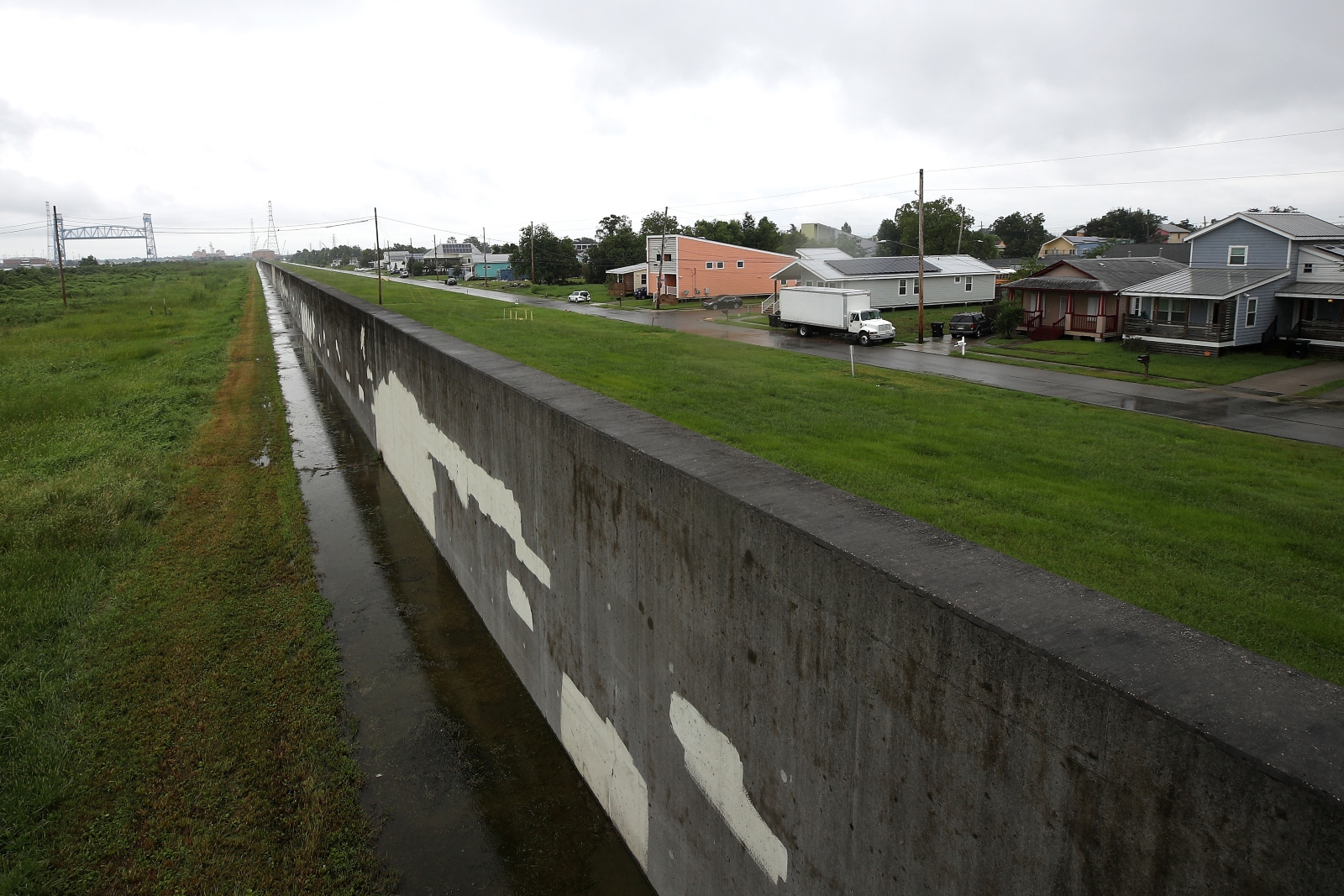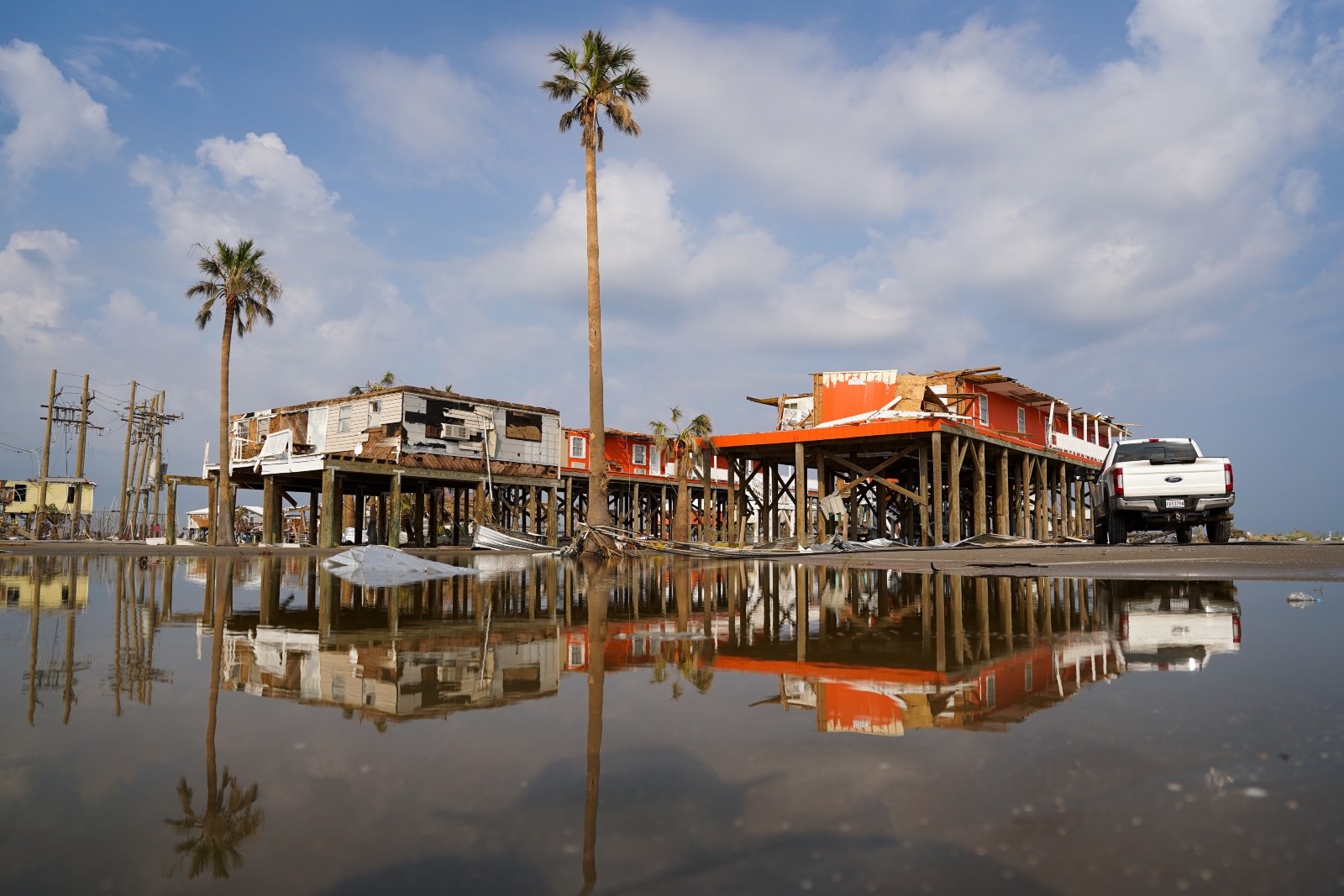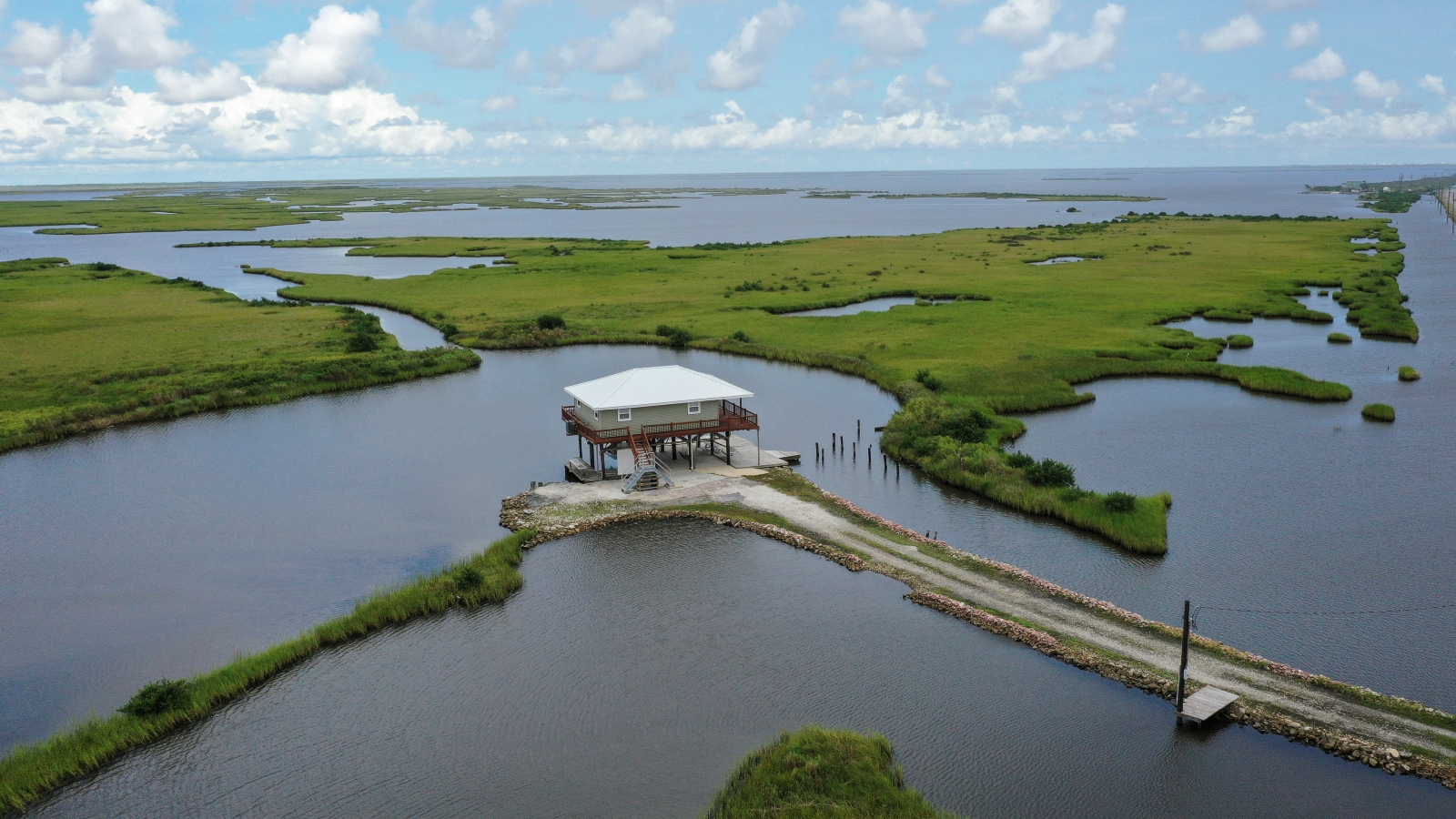Climate change has made Louisiana one of the most endangered states in the country. It has been struck by six major hurricanes in less than 25 years and lost hundreds of square miles of land to erosion in roughly the same period. But thanks partly to its extraordinarily bad luck — in particular the devastation of Hurricane Katrina in 2005 and the Deepwater Horizon oil spill in 2010 — the state has also secured an enormous amount of money for coastal adaptation: The federal government spent billions of dollars after Katrina to help Louisiana prepare for future storms, and a later settlement with BP over the Deepwater Horizon spill gave the state tens of billions more for coastal restoration.
This combination of bad luck and federal largesse has allowed Louisiana to pursue an audacious coastal protection program that has been touted as a “proven playbook” and “the right way to build climate resilience.” Officials have spent billions creating new marshes and diverting river sediment, slowing down the disappearance of coastal land, and they’ve also undertaken several large levee projects to protect low-lying populations. This plan has backing from both Democrat and Republican politicians, even though program officials talk openly about its role in responding to climate change. The latest version of the plan, which Governor John Bel Edwards called a “success story,” sailed through the legislature this week.
But a reality check is on the way. The state’s ambitious projects have successfully reduced land loss and flood risk, but many of its coastal communities still face an existential threat from climate change in spite of all the new infrastructure. And the money that has sustained the state’s coastal buildout will dwindle in the coming decade, forcing ever harder choices about what to fund.
Every six years, Louisiana’s Coastal Protection and Restoration Authority, or CPRA, releases a kind of shopping list, identifying which coastal projects it wants to fund over the following 50 years. According to the newest version of the plan, released this year, the state aims to spend a whopping $1 billion annually on those projects, an astonishing goal that reflects just how much federal funding the state has received. Half the spending goes toward ecosystem projects that are designed to slow down coastal land loss, and the other half goes toward projects that protect towns and cities from flooding.
But when it comes to slowing down land loss, CPRA has always been fighting a rearguard battle, said Simone Maloz, the campaign director for the Restore the Mississippi River Delta coalition and a key collaborator on the state’s plan.
“We can build thousands of acres of marsh really quickly by tapping into the river or tapping into dredged material from offshore sites,” Maloz told Grist. “But we cannot have it all the way that it used to be. There’s just not enough time, there’s not enough money, there’s not enough resources.”
Even with Louisiana’s unrivaled resources, coastal protection has become a matter of triage. CPRA’s own estimates show that the effect of its restoration program will be limited compared to the sheer scale of land loss. Under a moderate scenario, if the state sees just over a foot of sea-level rise in the next 50 years, CPRA’s coastal protection projects will save about a third of the 1,100 square miles that the state expects would vanish. Under higher projections, with two feet of sea-level rise over the same period, the projects would save less than 10 percent of a staggering 3,000 square miles of vulnerable land.
“We can rebuild a piece of marsh, but in 30 years, that may be the only piece of marsh there,” said Stuart Brown, a senior CPRA official and a main architect of the plan.
The state is also struggling to keep up with flood risk. For more than a century, Louisiana has relied on the federal U.S. Army Corps of Engineers to design and build large levee projects around major cities, with funds tending to arrive after these cities suffer damage from big storms. This was the approach the state took in New Orleans following Katrina: After the Corps’s old flood defense system failed during the storm, devastating the Lower Ninth Ward and nearby St. Bernard Parish, Congress gave the agency $14 billion to construct an enormous system of barriers and pumps. This system held up during a direct hit from Category 4 Hurricane Ida in 2021.

In other places, work has been slower. A 98-mile levee network in swampy Terrebonne Parish has been in the works for more than 20 years, and other proposed projects have languished for years without funding. Even if these levees are finished, Louisiana’s coastline is so vulnerable to hurricanes that protected communities would still see several feet of flooding during the worst storms. Furthermore, many coastal areas are rural and under-resourced, which makes it difficult for the Corps to justify building levees, given the cost-benefit analysis the agency is required to perform for every project.
For these reasons, CPRA has started to carve out more money for what it calls “nonstructural” flood projects. These include elevating homes off the ground, retrofitting businesses to keep water out, and buying out residents in the most vulnerable homes. In its last coastal plan from 2017, CPRA set aside less than a quarter of flood protection money for these projects; in this year’s plan, they get almost half the state’s flood dollars.
“We identify the best investment to reduce risk, whether it’s structural or nonstructural,” Brown told Grist, adding that the state uses a planning algorithm for this purpose. “This money that we would spend on a levee — could that money be better spent on nonstructural projects anywhere on the coast?”
Thanks to money from the federal government and the BP settlement, Louisiana has never had to choose between elevations and buyouts, or between land restoration and flood protection. The state plans to spend $1.6 billion next year on adaptation projects, enough to fund new marshes and diversions as well as levees and home elevations. But these flush days won’t last forever. The Deepwater Horizon settlement and associated oil spill fees have provided the lion’s share of funding over the past two decades, and the last of the oil spill money will arrive in 2031, just eight years from now. When that money dries up, the state could have to constrain its spending by as much as 80 percent.
“There is that fiscal cliff that we will get to,” said Michelle Gonzales, the coastal management planner for Jefferson Parish, which includes a section of coastline south of New Orleans. “What is the fix there? Is there an appetite to tax ourselves to repair our coasts? I don’t know.”
Gonzales’s parish includes the fishing town of Lafitte, where CPRA has endorsed a large ring levee that will cost more than $1.4 billion to build. The agency says the project will begin in a decade or two, but there’s no way to know how much money the state will have at that point.
That financial calculus may push CPRA away from the projects that have been the hallmark of the state’s celebrated coastal program. Even if Louisiana does manage to secure more money to build levees, the operation and maintenance of those levees is the state’s own responsibility, which puts the state on the hook for billions more in lingering costs over the coming decades. And elevating homes isn’t a foolproof solution either, since raising them off the ground by more than 15 feet makes them more vulnerable to wind damage during big storms. And if the state falls further behind on marsh diversion projects, flood risk will only increase.

As funds disappear, the state’s only option may be to embrace what experts call “managed retreat,” a coordinated movement out of the riskiest areas. This is a reality that other states like North Carolina have already had to confront. Even though Louisiana’s coastal plan has saved hundreds of square miles of land and reduced flood damages for many communities, it has also served to delay the state’s own reckoning with that reality.
The trouble is that retreat is unpopular, said Jessica Simms, a researcher with the National Academies of Sciences who studies climate adaptation in Louisiana. That’s especially true in a state that has long been able to rely on the federal government to protect its vulnerable communities.
“It’s very politically risky to talk about, because you don’t want to tell people to move,” she said. “And then if you give money to people to elevate their houses, they are still very much at risk.” When it comes to big levee projects, by contrast, “you can take the photos of the people with their hard hats on and their golden shovels, starting a project, and that looks great.”
Louisiana has already seen political blowback over buyouts. When the Army Corps of Engineers endorsed mandatory buyouts and elevations for southwest Louisiana in 2015, the agency got hundreds of furious comments from residents who wanted levees instead. The agency revised its report to make the projects optional, but the broader problem was clear: Even with substantial money from Congress, there was no way to protect southwest Louisiana from storms except by moving people out of the way.
As the limits of the state’s coastal program begin to show, Simms told Grist that there’s another strategy that could serve as a better model. Instead of trying to leverage billions of dollars to slow down land loss and displacement, states could use federal money to ensure that the inevitable retreat can be easier. In 2016, after Louisiana won a grant from the Obama administration, it undertook a series of local adaptation projects based on grassroots input from hundreds of coastal residents. These projects included affordable housing for residents moving back from the water and a mental health program to help residents of eroding Plaquemines Parish cope with the loss of a familiar environment.
The LA SAFE program, as the grant-funded project was known, wasn’t as flashy as the levees and diversions that CPRA has endorsed, but Simms thinks it was a more sustainable framework. Rather than trying to hold onto a reality that was vanishing, the state was helping communities with the adaptation that was already happening.
“I think there is often such a disconnect between the brain of the bureaucrat in Baton Rouge and the folks who are living in these places,” Simms told Grist. “I think we can use coastal restoration to help people grieve what they’re losing, and also adapt.”



